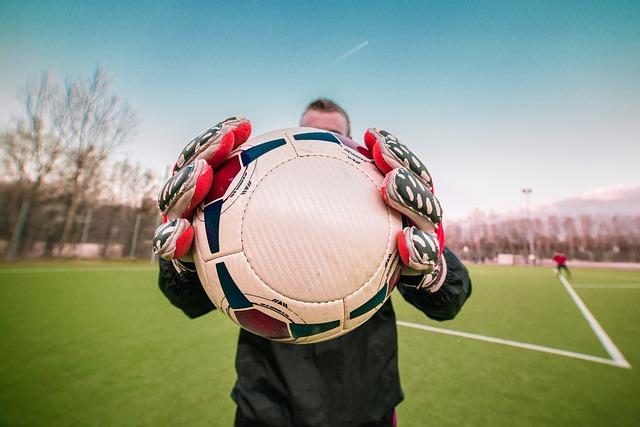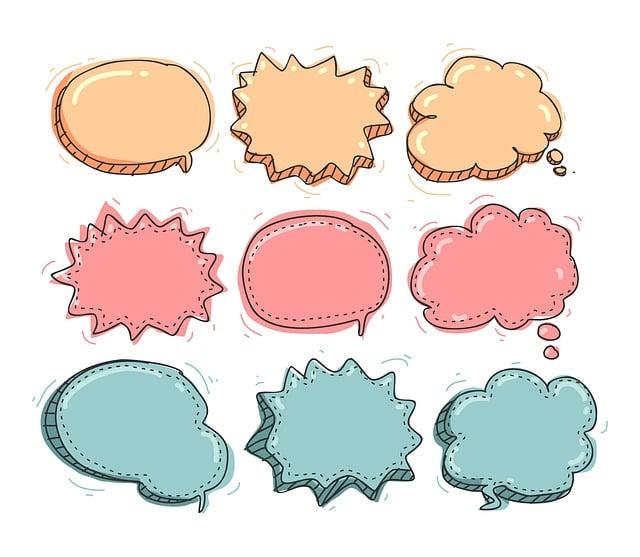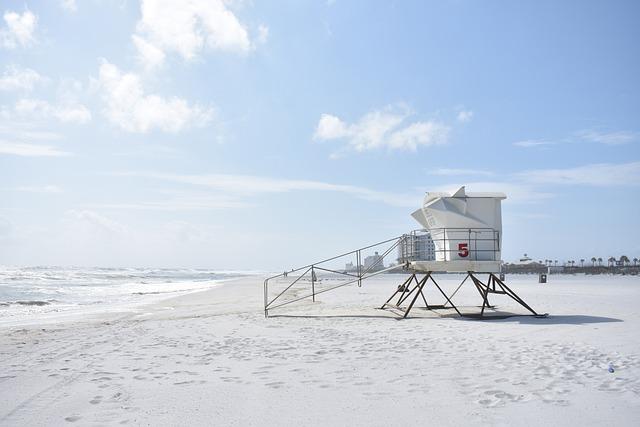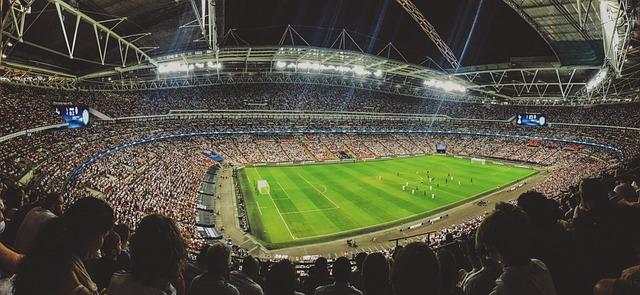Does Soccer Play in the Rain? Tips for Wet Weather Matches!
Soccer is a beautiful game that knows no weather bounds, but what happens when the skies open up and rain starts to pour down? In this article, we delve into the world of wet weather matches and provide you with tips on how to navigate the slick, rain-soaked pitch like a pro. So lace up your boots and prepare to tackle the rain with confidence!
Contents
- 1 Does Soccer Play in the Rain? Tips for Wet Weather Matches!
- 2 Playing Conditions in Wet Weather
- 3 Best Footwear for Wet Fields
- 4 Adjusting Playing Style in the Rain
- 5 Enhancing Ball Control in Inclement Weather
- 6 Strategies for Defending in Wet Conditions
- 7 Tips for Goalkeepers in the Rain
- 8 Importance of Communication in Wet Weather Matches
- 9 Preparation and Warm Up for Wet Weather Games
- 10 Safety Tips for Players in Rainy Matches
- 11 Closing Remarks
Does Soccer Play in the Rain? Tips for Wet Weather Matches!
Playing soccer in the rain can be a challenging but exciting experience. While the wet weather may present some obstacles, with the right preparation and mindset, you can still have a successful match. Here are some tips to help you make the most out of wet weather games:
- Wear the right gear: Make sure to dress appropriately for the rain by wearing a waterproof jacket, cleats with good traction, and moisture-wicking clothing.
- Adjust your playing style: The rain can make the field slippery, so focus on making controlled passes and shots rather than risky plays.
- Stay mentally focused: Keep your concentration high and remain alert for any changes in the game due to the weather conditions.
- Communicate with your teammates: Clear communication is key in any soccer match, but it becomes even more important in wet weather games. Make sure to talk to your teammates to stay coordinated and avoid mistakes.
By following these tips and staying positive, you can enjoy playing soccer in the rain and improve your skills in challenging conditions. Remember to have fun and embrace the uniqueness of wet weather matches!
Playing Conditions in Wet Weather
When playing soccer in wet weather conditions, there are a few important considerations to keep in mind to ensure the safety and performance of players. In rainy conditions, the field can become slippery, affecting players’ ability to control the ball and maintain their balance. To combat these challenges, here are some tips to help players adapt and excel in wet weather matches:
- Proper footwear is essential in wet weather matches. Players should wear cleats with good traction to prevent slipping on the wet and slippery field.
- Adjusting playing style is important in wet weather conditions. Players should avoid making sudden turns or quick stops to prevent losing control of the ball.
- Ball control becomes more difficult in wet weather, so players should focus on softer touches and passing to maintain possession and control of the game.
- Keeping the ball low is a smart strategy in wet weather matches, as the ball is less likely to skid or get away from players when keeping it close to the ground.
In addition to these tips, it’s important for players to stay focused, adapt to the conditions, and communicate effectively with their teammates to ensure a successful outcome in wet weather matches. By following these simple guidelines, players can confidently navigate through rainy matches and continue to enjoy the game they love.
Best Footwear for Wet Fields
When playing soccer on wet fields, it’s important to choose the right footwear to maintain your performance and prevent injuries. The is cleats with firm ground studs that provide traction and stability in slippery conditions. Look for cleats with molded studs or bladed studs that can penetrate wet grass without causing slipping.
In addition to cleats, consider wearing shoes with water-resistant materials to keep your feet dry during rainy matches. This will help prevent discomfort and blisters caused by wet socks and shoes. Look for soccer shoes with synthetic uppers or waterproof coatings that repel water and mud.
Avoid wearing shoes with metal studs on wet fields, as they can increase the risk of slipping and sliding during gameplay. Opt for rubber or plastic studs that offer better traction and grip on wet grass. Remember to properly maintain your footwear by cleaning them after each use to prevent mud buildup and maintain their performance on wet fields.
Adjusting Playing Style in the Rain
When playing soccer in the rain, it’s important to make some adjustments to your playing style to ensure you can still perform at your best. Here are some tips to help you navigate wet weather matches:
- Focus on ball control: The ball tends to move faster on wet surfaces, so make sure you’re paying extra attention to your ball control to avoid turnovers.
- Use shorter passes: Instead of making long passes that can easily get intercepted or go off course in the rain, opt for shorter, more controlled passes to maintain possession.
- Adjust your footwear: Invest in a good pair of soccer cleats with good traction to help prevent slipping on the wet field. Consider adding additional studs or grips for extra stability.
- Be mindful of shooting technique: When taking shots in the rain, aim to keep the ball low and on the ground to reduce the chances of it slipping out of the goalkeeper’s hands.
Enhancing Ball Control in Inclement Weather
When playing soccer in inclement weather, such as rain, it’s important to focus on enhancing your ball control to maintain a competitive edge on the field. Wet conditions can make it challenging to dribble, pass, and shoot effectively, but with the right techniques and mindset, you can adapt and excel in these conditions.
One key tip for improving ball control in wet weather matches is to focus on your first touch. Ensure that your first touch on the ball is controlled and deliberate, as a heavy or erratic touch can easily result in loss of possession. Practice trapping the ball softly and cushioning it with your foot to maintain control in slippery conditions.
Additionally, adjusting your body positioning can help you navigate the wet field more effectively. Keep your center of gravity low and distribute your weight evenly to maintain balance and stability. This will allow you to make quick and precise movements without slipping or losing control of the ball.
Lastly, consider using a ball with extra grip or traction in rainy conditions to improve your handling and control. Look for balls with textured surfaces or added grip elements to help you maintain a secure hold on the ball, even when it’s wet and slippery. With these tips in mind, you can confidently take on wet weather matches and showcase your skills on the field.
Strategies for Defending in Wet Conditions
When playing soccer in the rain, it’s essential to adjust your defending strategies to account for the slippery conditions. Here are some tips to help you stay solid at the back:
- Stay Compact: In wet weather, the ball moves faster, making it harder to defend. Keep your defensive line compact to limit space for the opposing team.
- Stay on Your Feet: Avoid sliding tackles as much as possible, as they can easily lead to losing your balance in wet conditions. Focus on maintaining your footing and intercepting passes instead.
- Communicate: Clear communication is key in any match, but even more so in the rain. Make sure your teammates are aware of the conditions and stay in constant communication to prevent defensive errors.
| Condition | Strategy |
|---|---|
| Slippery Pitch | Focus on quick movements and stay on your feet to avoid sliding |
| Reduced Visibility | Communicate loudly with your teammates and rely on positional awareness |
By implementing these strategies and staying adaptable to the unpredictable weather conditions, you can effectively defend your goal and help your team secure a positive result even in wet weather matches.
Tips for Goalkeepers in the Rain
Playing soccer in the rain can present unique challenges for goalkeepers. Here are some tips to help you navigate wet weather matches and perform at your best:
– **Proper positioning:** In rainy conditions, the ball is likely to be slippery and harder to control. To compensate for this, make sure you position yourself slightly closer to your goal line to reduce the chance of the ball slipping past you.
– **Grip and handling:** Focus on maintaining a secure grip on the ball by using proper technique when catching or deflecting shots. Consider wearing gloves with enhanced grip in wet conditions to help maintain control.
– **Footwork and agility:** Wet and muddy conditions can make the pitch slippery, affecting your ability to move quickly. Stay light on your feet and be ready to adjust your positioning to react to shots and crosses effectively.
– **Communication:** Clear communication with your defenders is crucial in any match, but even more so in the rain. Make sure to shout instructions loudly and clearly to help your teammates navigate the challenging conditions.
Remember, practice makes perfect, so don’t shy away from training in the rain to get accustomed to the unique demands of wet weather matches. With the right preparation and mindset, you can excel as a goalkeeper even in challenging conditions.
Importance of Communication in Wet Weather Matches
Playing soccer in wet weather conditions can present unique challenges for players, but effective communication can make a big difference in how your team performs. In rainy matches, good communication becomes even more important to ensure everyone is on the same page and able to adapt quickly to the changing conditions.
Here are some tips to improve communication during wet weather matches:
- Verbally communicate: Make sure to speak clearly and loudly to ensure your teammates can hear you over the sound of the rain.
- Use hand signals: In noisy or crowded conditions, hand signals can be a useful way to communicate quickly and effectively with your teammates.
- Stay close: Keep your team compact and close together to facilitate easier communication and ensure everyone is aware of each other’s movements.
| Advantages of Good Communication |
|---|
| Improved coordination |
| Increased team cohesion |
| Enhanced ability to adapt to changing conditions |
By prioritizing communication and implementing these tips, you can help your team navigate wet weather matches successfully and come out on top.
Preparation and Warm Up for Wet Weather Games
In wet weather games, preparation and warm-up are crucial to maximize performance and minimize the risk of injury. Here are some tips to help you and your team excel in rainy conditions:
To start, make sure you have the right gear for playing in the rain. This includes waterproof and comfortable clothing, non-slip boots, and a towel to dry off during breaks. Keeping dry and warm will help you stay focused and agile on the field.
Next, adjust your pre-game warm-up routine to suit the wet weather. Focus on dynamic stretching to loosen up your muscles and increase your range of motion. Incorporate exercises that simulate quick movements and sudden changes in direction, as these are common in slippery conditions.
During warm-ups, practice controlling the ball on wet surfaces to get a feel for how it behaves in the rain. Work on your passing, dribbling, and shooting techniques to adapt to the slick conditions. Remember to stay hydrated and mentally prepared for the challenges of playing in the rain.
Safety Tips for Players in Rainy Matches
Playing soccer in the rain can add an exciting challenge to the game, but it also comes with its own set of safety concerns. To ensure the safety of players in rainy matches, here are some essential tips to keep in mind:
- Proper Footwear: Wearing cleats with good traction is crucial in preventing slips and falls on the wet playing surface.
- Stay Hydrated: Despite the cooler temperatures, staying hydrated is essential, especially when playing in the rain.
- Warm-Up Carefully: Take extra time to warm up your muscles properly before playing in the rain to prevent injuries.
| Tip | Details |
|---|---|
| Wear synthetic clothing | Avoid cotton as it retains water and can make you colder. |
| Use a towel | Keep a towel nearby to dry off during breaks. |
By following these safety tips and being prepared for wet weather conditions, players can enjoy their soccer matches even in the rain!
Closing Remarks
So, now you know that soccer definitely does play in the rain! With the right preparation and mindset, wet weather matches can be just as enjoyable and successful as playing in dry conditions. Remember to adjust your playing style, gear, and tactics to suit the conditions, and make the most out of your rainy day games. Keep practicing, stay safe, and embrace the challenge of playing in the rain – you might just find it to be a refreshing change of pace!

















